Canadian Treaty Display At The Forks In Winnipeg
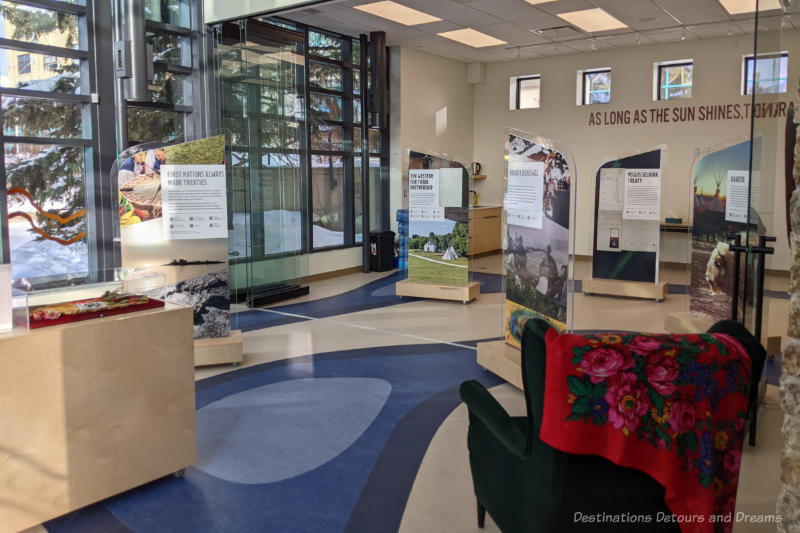
Displays at the Agowiidiwinan Centre at The Forks in Winnipeg, Manitoba, Canada, teach about the treaties between First Nations and the British Crown
At the start of many events in Winnipeg, Manitoba, you’ll hear a land acknowledgement that may go something like this: We acknowledge we are gathered on Treaty 1 territory, the traditional lands of the Anishinaabe, the Cree, the Oji-Cree, the Dakota, and the Dene people, and the homeland of the Métis Nation. Similar land acknowledgements are made in other parts of the country on other treaty territories. Treaty 1 was the first of 11 numbered treaties negotiated between the Crown and First Nations between 1871 and 1921.
The treaties were nation-to-nation agreements providing a framework for living together and sharing the land Indigenous peoples traditionally occupied. Although signed in the past, these treaties remain binding, reciprocal commitments in place today. All Canadians are beneficiaries of the treaties, yet many of us know very little about them.

The Agowiidiwinan Centre, which opened at The Forks in Winnipeg, Manitoba, Canada in December 2022, offers the opportunity to expand one’s knowledge about the treaties. Developed by the Treaty Relations Commission of Manitoba, the exhibits teach about the history, meaning, and contemporary aspects of the treaties.
Information panels at the centre are laid out in a meandering pattern to be followed like a river. Each panel contains written text, photos, and QR links. You can use your phone to follow the QR links to more in-depth articles, videos, and maps.
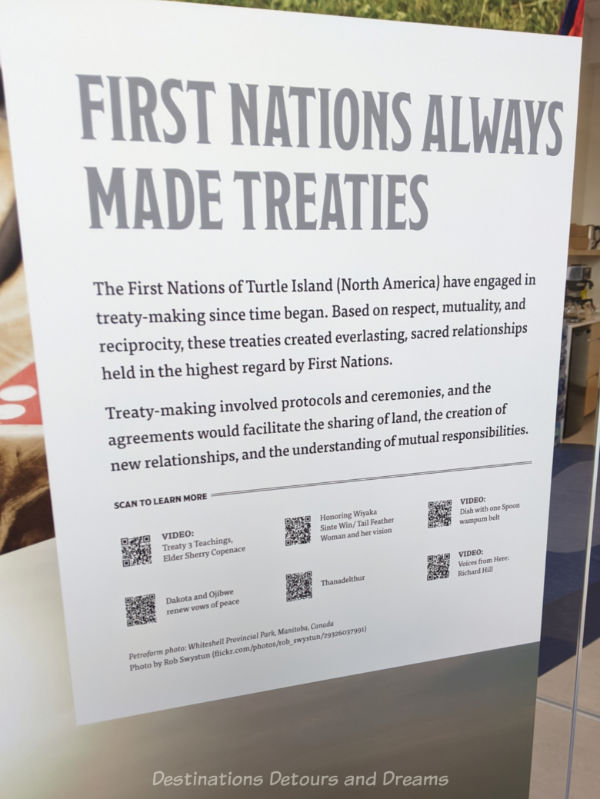
Treaty-making was historically used among First Nations peoples for inter-tribal alliances, sharing of land, and the understanding of mutual responsibilities. First Nations viewed treaty making as an extension of that. They wanted to ensure their land and way of life would be protected as they shared the land. The Crown’s focus was on acquiring land.
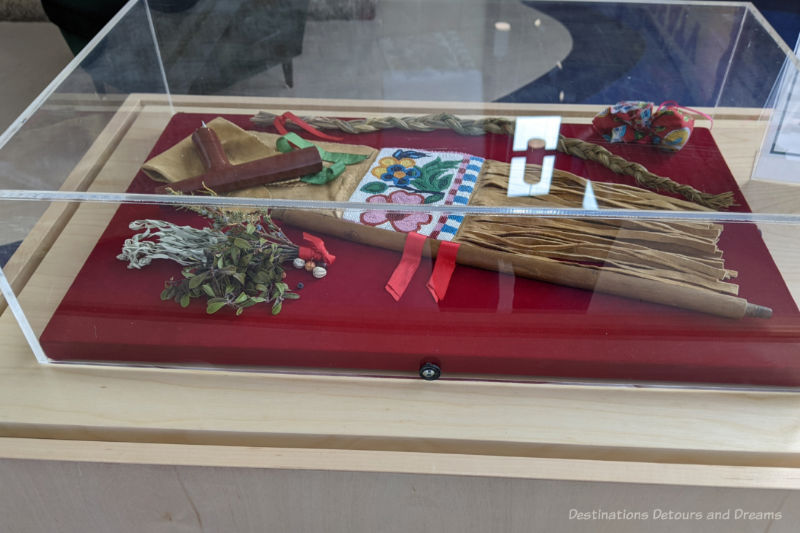
The pipe ceremony frequently accompanied the start of negotiations. It was regarded as the way by which participants would be truthful, respectful, and abide by the decisions and agreements made. The pipe is a symbol of unity, humanity, and dignity.
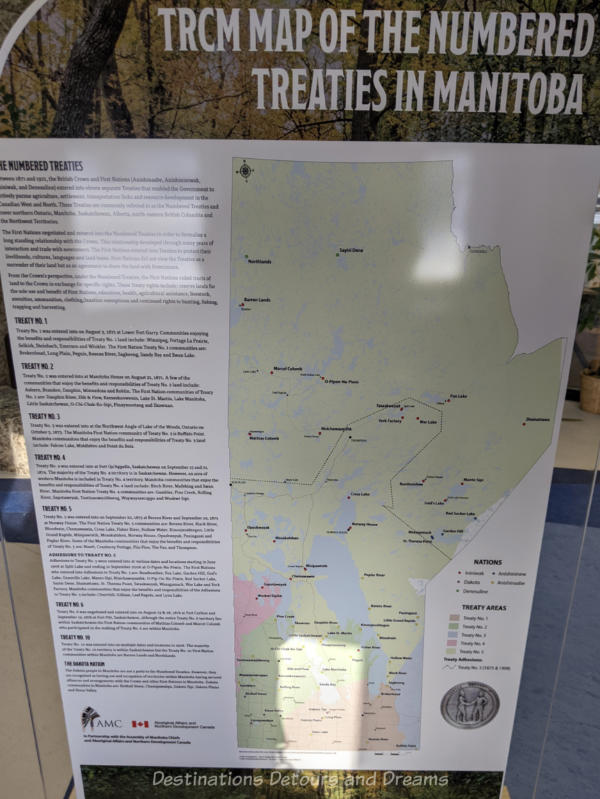
A map of Manitoba shows areas represented by five different treaties (Treaties 1 through 5). In addition, two Manitoba First Nations communities participated in the making of Treaty 6 covering an area in Saskatchewan, and two Manitoba First Nations communities fall within the area of Treaty 10, whose majority of treaty is within Saskatchewan. The Dakota people of Manitoba were not signatories to any treaties.
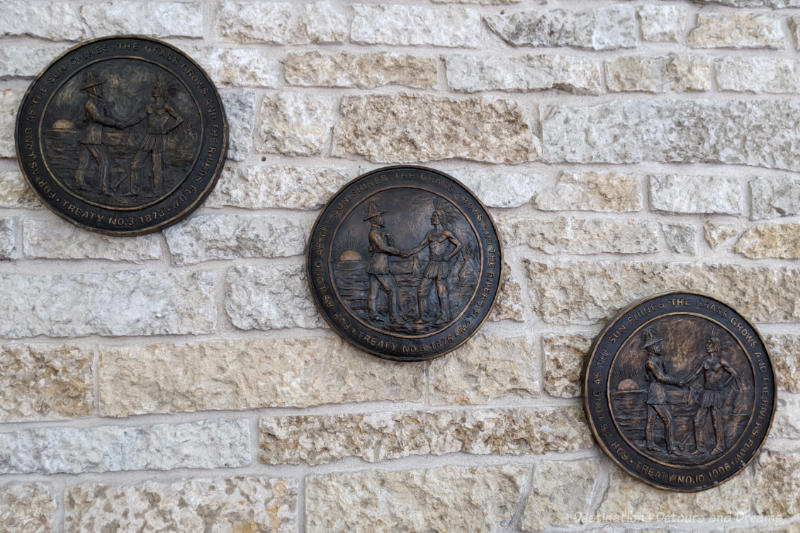
Differing interpretations of the treaties have caused problems. For Indigenous people, the sacred binding character of the treaties is found not only in the legal document, but also in what was said during negotiations. These words in Indigenous languages did not always make it into the English text. Further problems have arisen as Governments failed to uphold treaty obligations. Some of those issues are highlighted in the display.
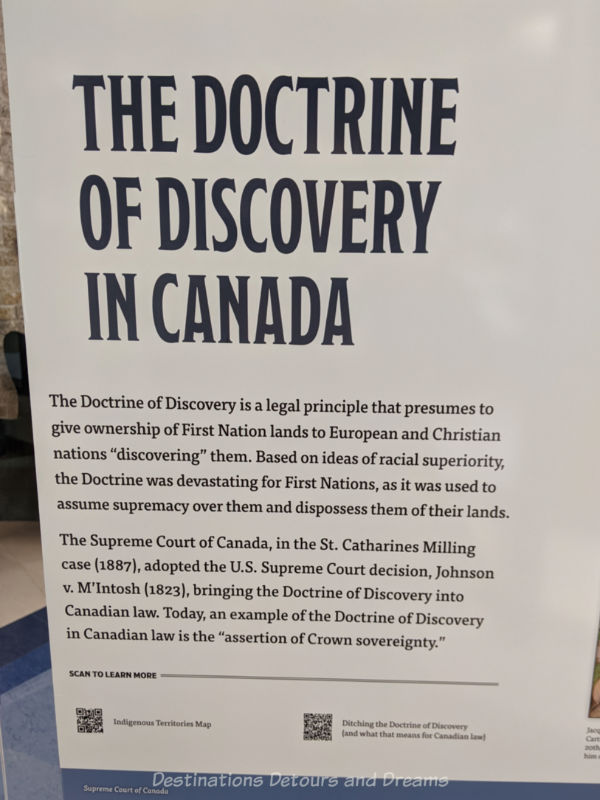
The Doctrine of Discovery, which emanated from a series of Papal Bulls in the 14th and 15th centuries, is a legal principle giving certain European nations the power to conquer non-Christian lands. It played a central role in the colonization of the “New World.” Because it has never been renounced, it remains the basis for Canadian law and continues to impact Indigenous peoples.
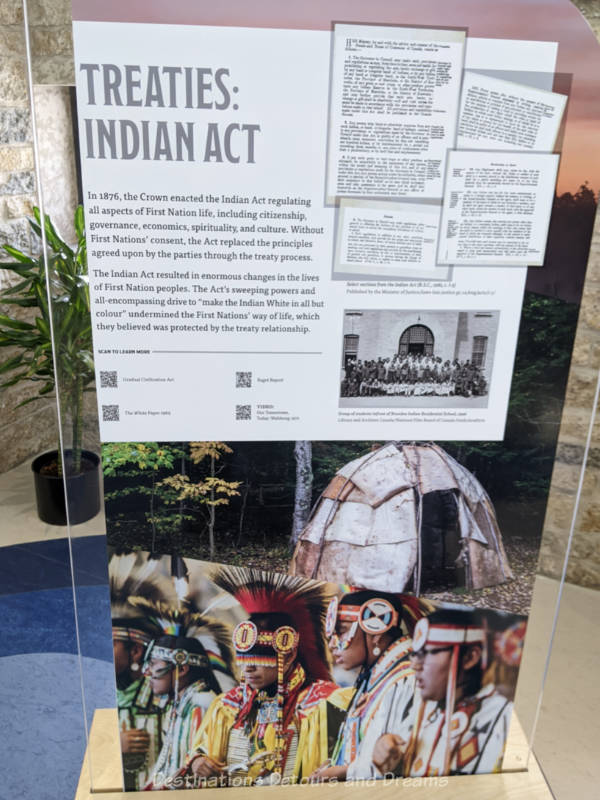
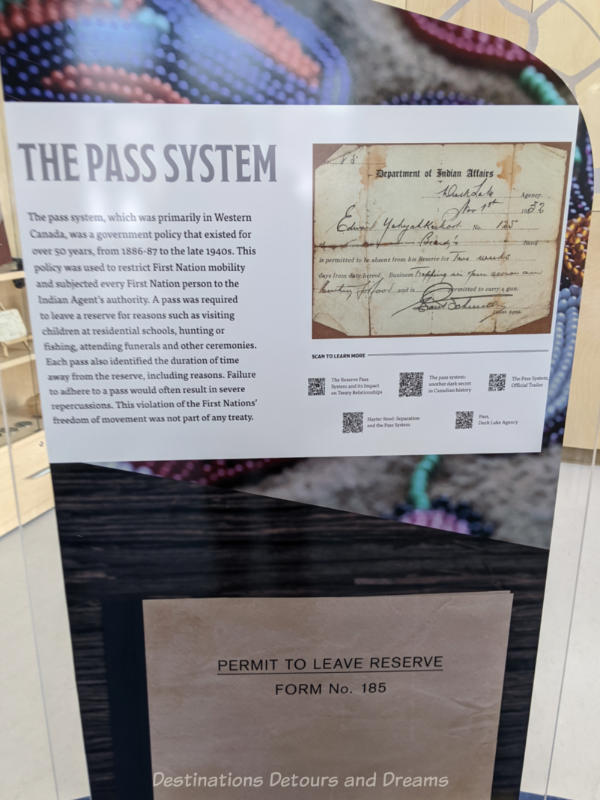
In 1876, without First Nations’ consent, the Crown enacted the Indian Act, which regulated and constrained all aspects of First Nations life. The Act replaced the principles agreed to through the treaty process. While the Indian Act has undergone numerous amendments since it was first passed in 1876, it largely retains its original form and continues to have tragic impacts on First Nations. A pass system in western Canada from 1886 to the 1940s restricted First Nations’ freedom of movement, a restriction that was not part of any treaty.
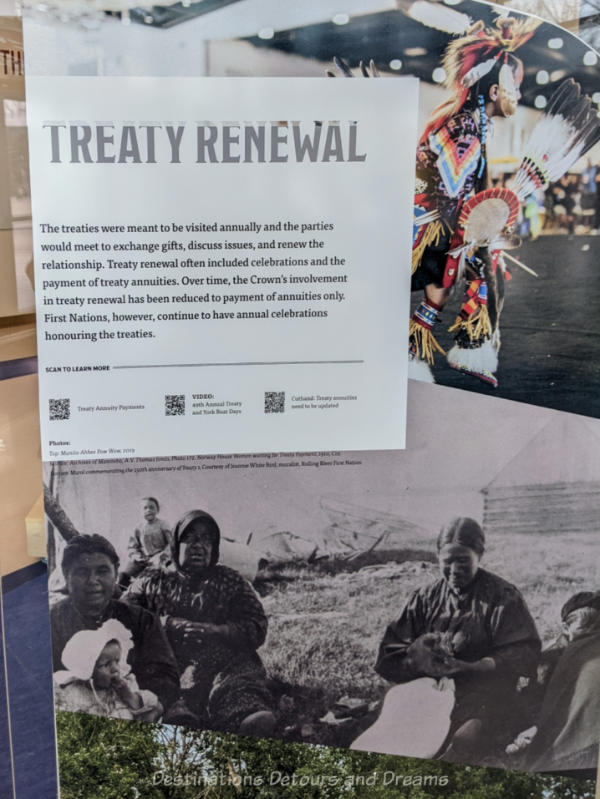
The treaties were meant to be visited annually. The parties would meet to exchange gifts, discuss issues, and renew the relationship. Treaty renewal often included celebrations and the payments of treaty annuities. Over time, the Crown’s involvement has been reduced to payment of annuities only.
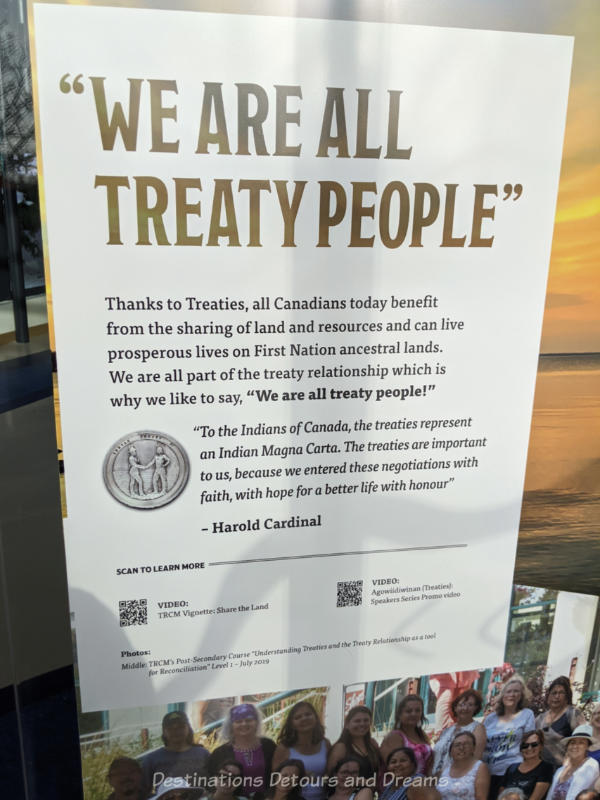
If you do not read any of the QR material, you can likely get through the display within half an hour. You will gain a far greater understanding by reading or viewing at least some of the QR material. However, attempting to read it all in one visit might be overwhelming. You may want to bookmark some of it for later perusal or make return visits.
The exhibit is free. Currently it is all in English, but there are plans to add Indigenous languages and French, and to make it accessible to the hearing or sight impaired.
The Agowiidiwinan Centre is located at 15 Forks Market Road on the south side of The Forks Market Plaza. For those of you familiar with The Forks site, this was once the Muddy Waters restaurant. The Centre is one of the places featured in my guide book 111 Places in Winnipeg That You Must Not Miss.
Never miss a story. Sign up for Destinations Detours and Dreams free monthly e-newsletter and receive behind-the-scenes information and sneak peeks ahead.
PIN IT
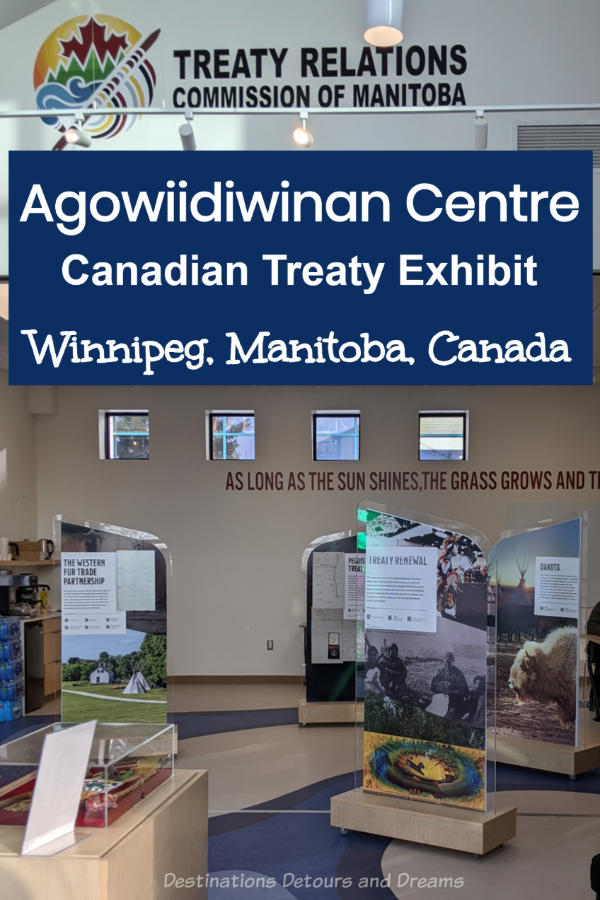

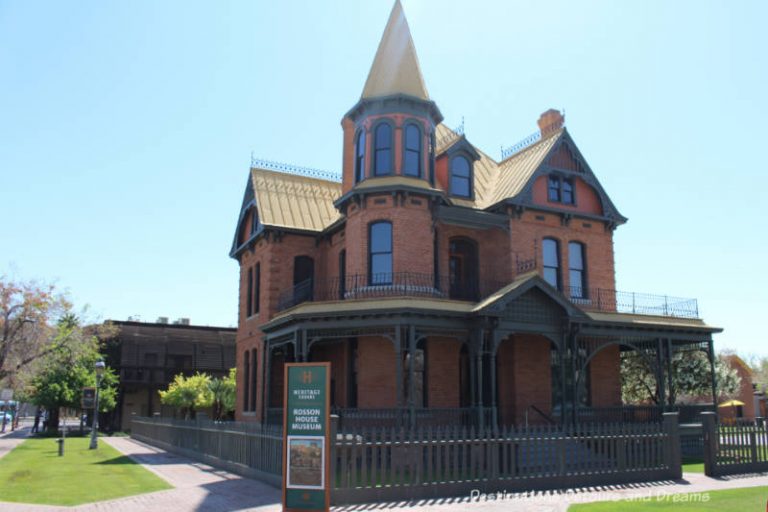


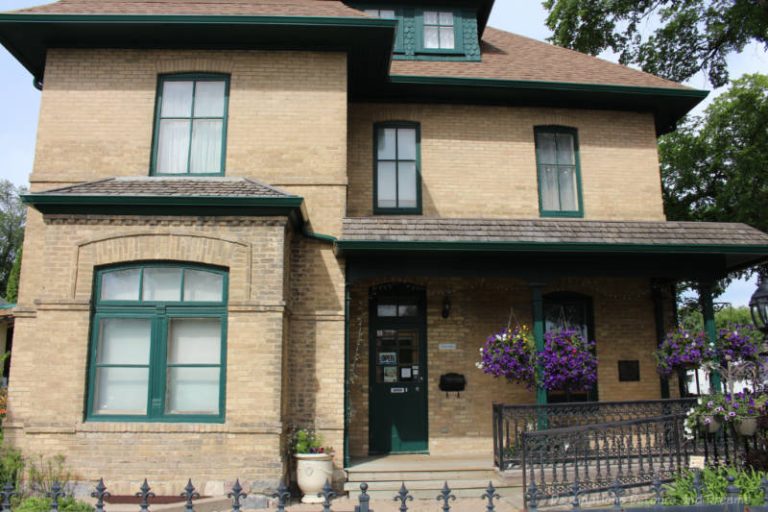
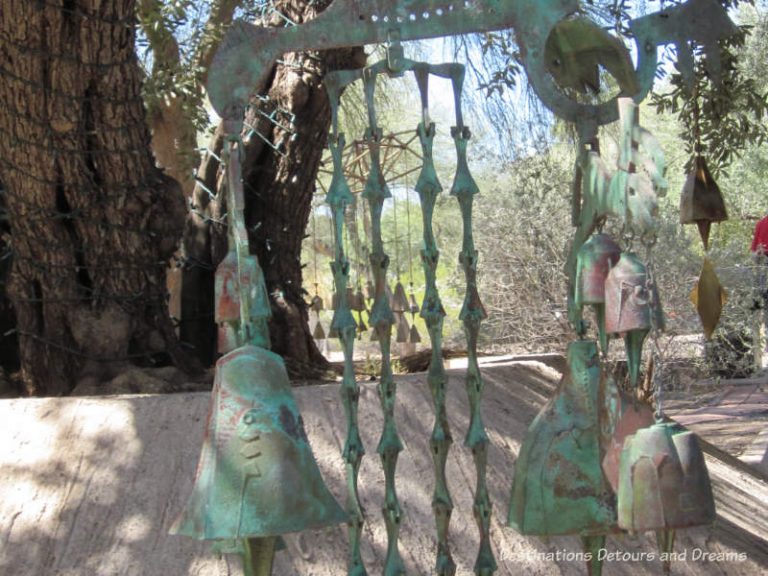

The Doctrine of Discovery is pretty shocking . I’m amazed that anyone would consider it still having any validity.